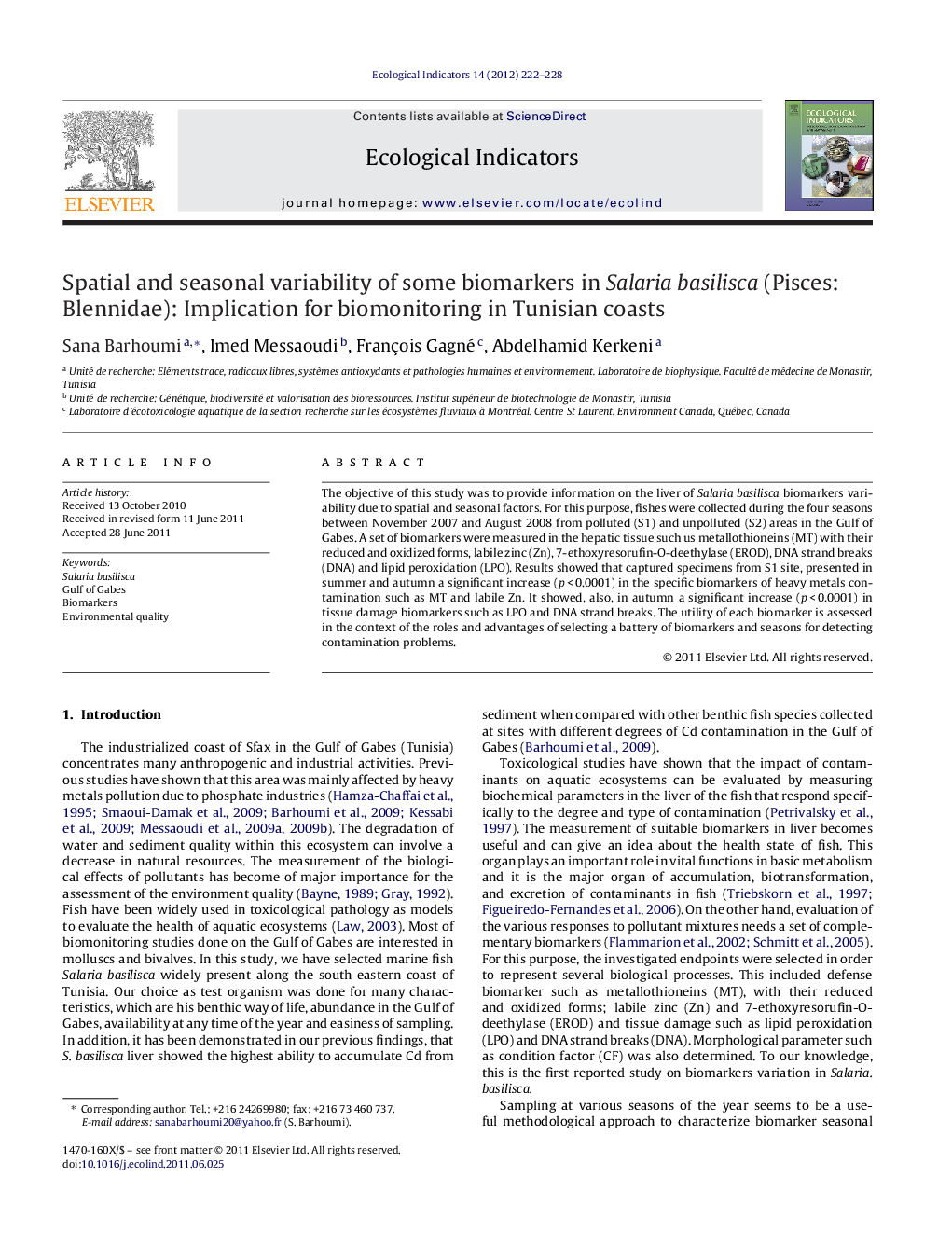| Article ID | Journal | Published Year | Pages | File Type |
|---|---|---|---|---|
| 4373902 | Ecological Indicators | 2012 | 7 Pages |
The objective of this study was to provide information on the liver of Salaria basilisca biomarkers variability due to spatial and seasonal factors. For this purpose, fishes were collected during the four seasons between November 2007 and August 2008 from polluted (S1) and unpolluted (S2) areas in the Gulf of Gabes. A set of biomarkers were measured in the hepatic tissue such us metallothioneins (MT) with their reduced and oxidized forms, labile zinc (Zn), 7-ethoxyresorufin-O-deethylase (EROD), DNA strand breaks (DNA) and lipid peroxidation (LPO). Results showed that captured specimens from S1 site, presented in summer and autumn a significant increase (p < 0.0001) in the specific biomarkers of heavy metals contamination such as MT and labile Zn. It showed, also, in autumn a significant increase (p < 0.0001) in tissue damage biomarkers such as LPO and DNA strand breaks. The utility of each biomarker is assessed in the context of the roles and advantages of selecting a battery of biomarkers and seasons for detecting contamination problems.
► In this work we assess the littoral environment quality of Gabes gulf. ► We study biological effects of pollution in a benthic fish Salaria basilisca. ► We examined spatial and seasonal variations of damage and defence biomarkers. ► Significant biomarkers responses were found in summer and autumn at polluted site. ► Salaria basilisca could be used as a good bioindicator of heavy metals pollution.
